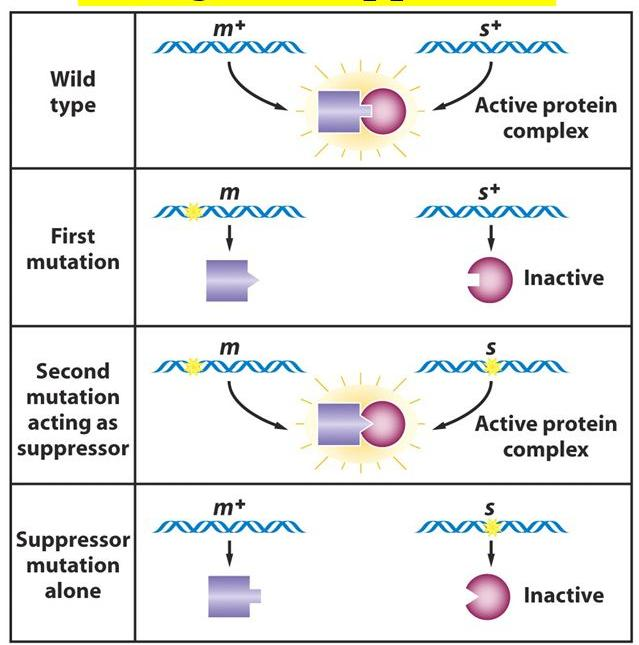L04 Extensions of Mendelian Inheritance
一、Inheritance patterns of single genes
There are many ways in which two alleles of a single gene may govern the outcome of a trait
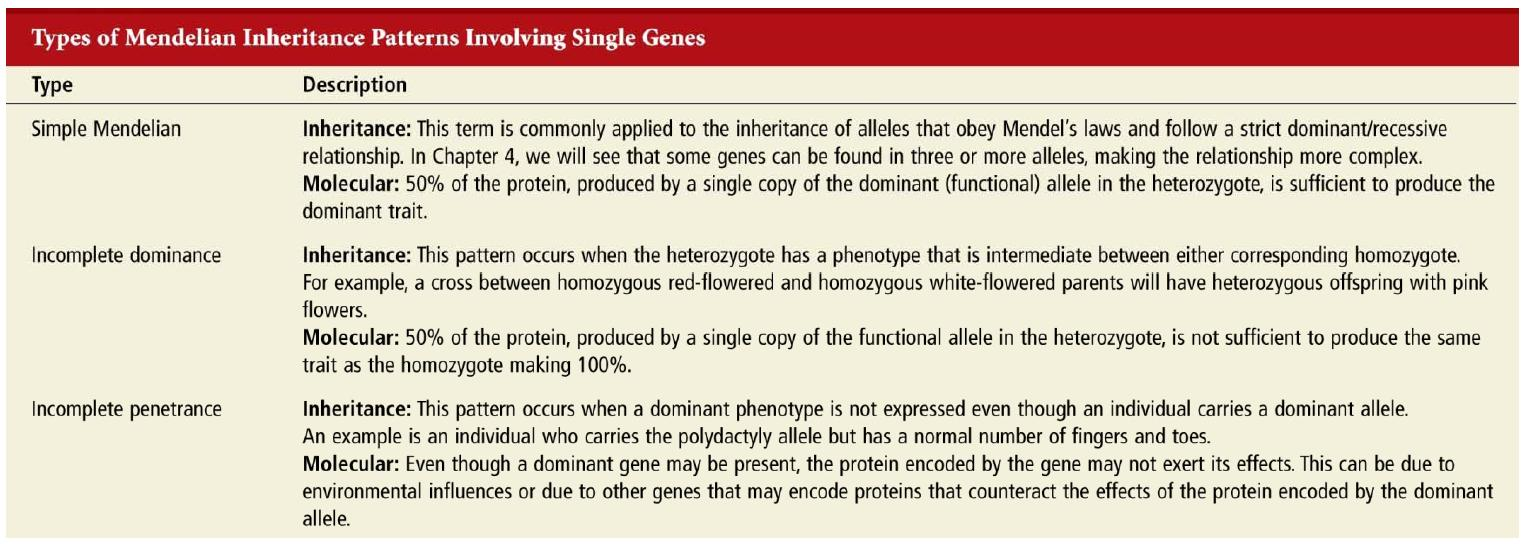
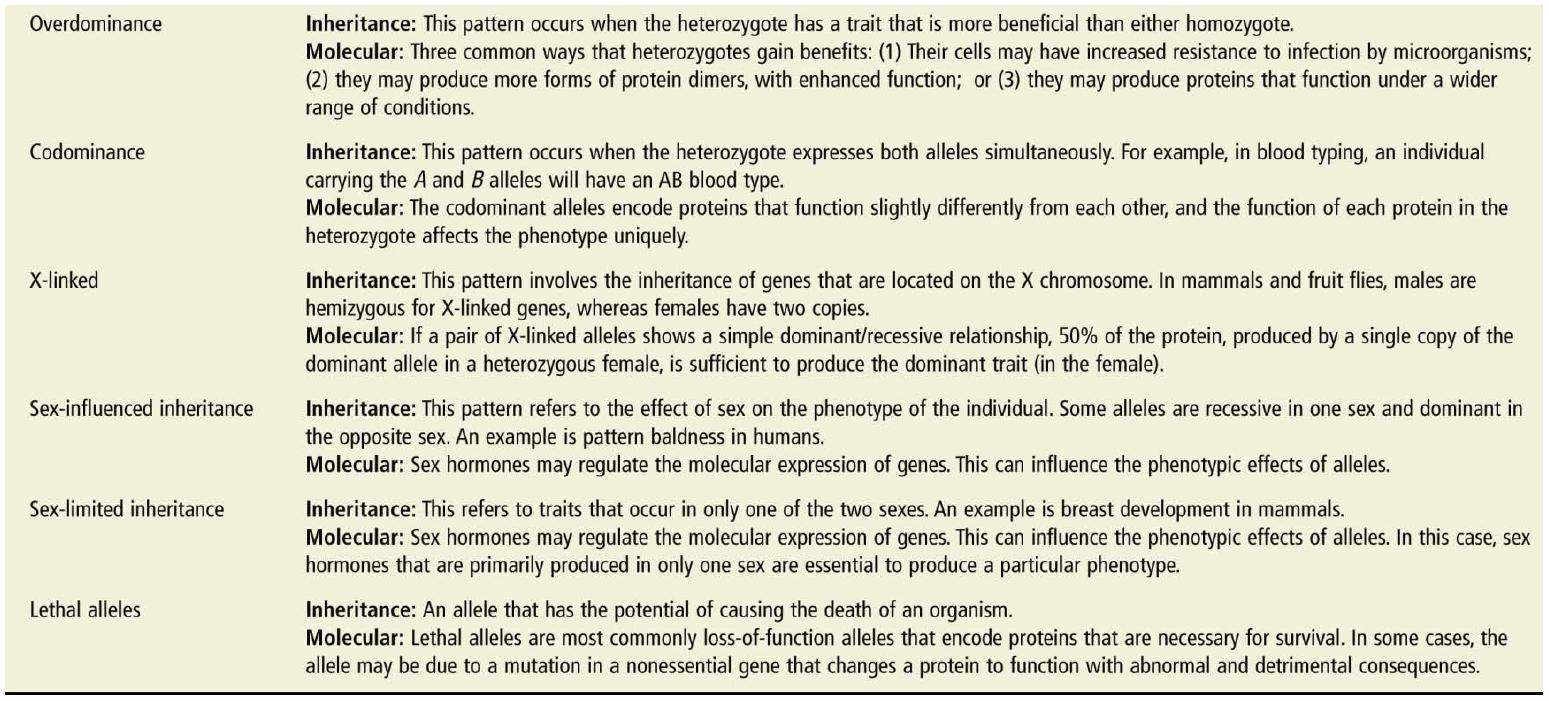
These patterns are examined with two goals in mind
Understanding the relationship between the molecular expression of a gene and the trait itself
The outcome of crosses
Wild‐type alleles vs. Mutant alleles
(1)wildtype alleles
Prevalent alleles in a population are termed wildtype alleles
These typically encode proteins that
- Function normally
- Are made in the proper amounts
(2)mutant alleles
Alleles that have been altered by mutation are termed mutant alleles
- These tend to be rare in natural populations
- They are likely to cause a reduction in the amount or function of the encoded protein
- Such mutant alleles are often inherited in a recessive fashion
Dominant Mutant
Dominant mutant much less common than recessive mutant
Three explanations for most dominants
- Gain‐of‐function
- Protein encoded by the mutant gene is changed so it gains a new or abnormal function
- Dominant‐negative
- Protein encoded by the mutant gene acts antagonistically(对抗性地) to the normal protein
- Haploinsufficiency(单倍剂量不足)
- mutant is loss‐of‐function
- heterozygote does not make enough product to give the wild type phenotype
Simple Dominance
In a simple dominant/recessive relationship, the recessive allele does not affect the phenotype of the heterozygote
So how can the wild‐type phenotype of the heterozygote be explained?
(1)possible explanations
- 一半剂量的蛋白足以实现显性性状:
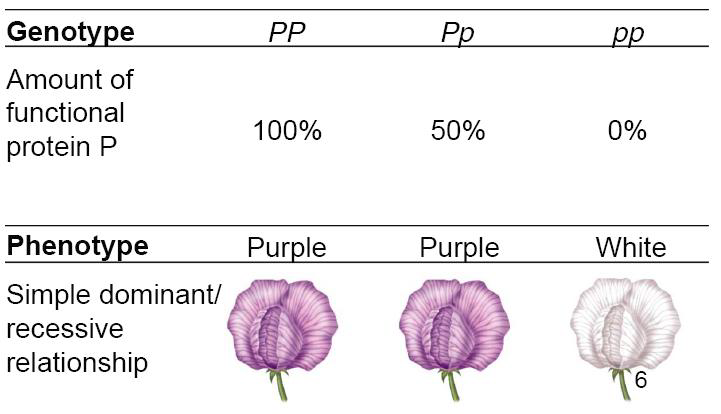
- 显性基因表达量提高:
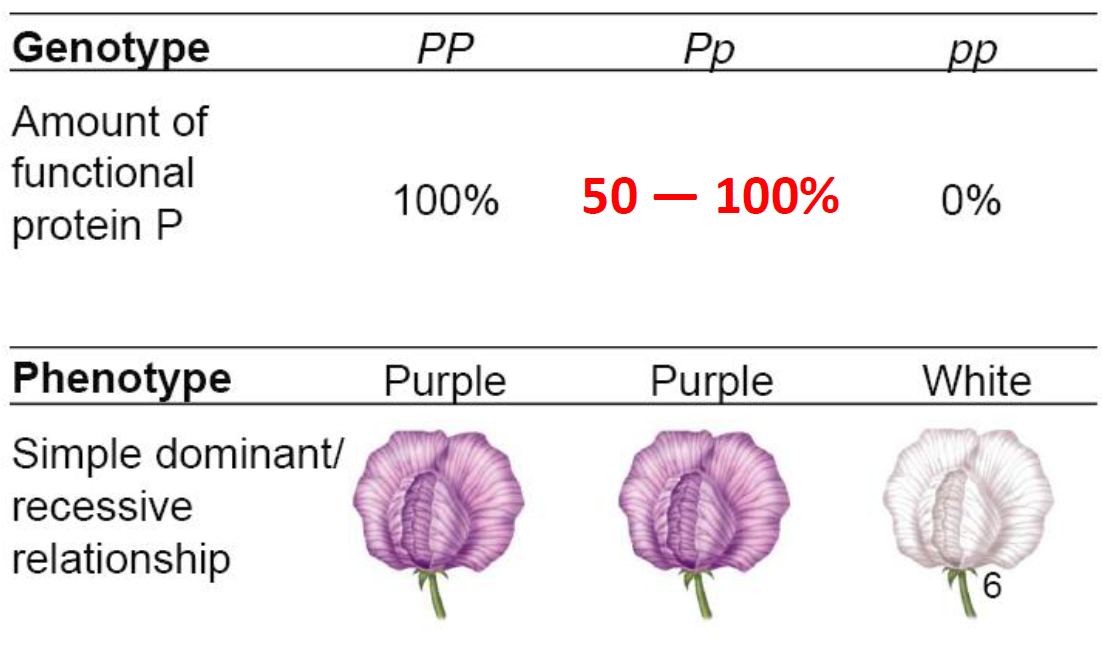
The normal gene is “up‐regulated” to compensate for the lack of function of the defective allele
Incomplete Dominance 不完全显性
In incomplete dominance the heterozygote exhibits a phenotype that is intermediate between the corresponding homozygotes
The allele for red color(R) is incompletely, or partially, dominant over the allele for white color(r).
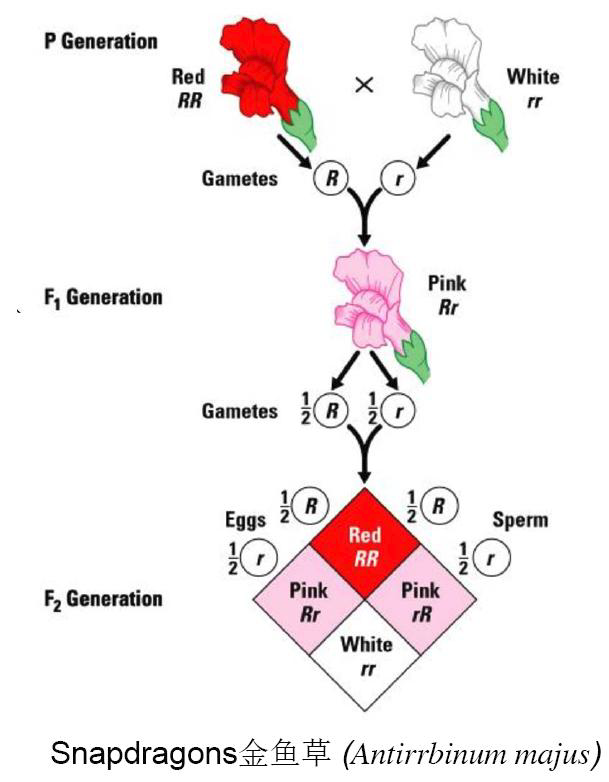
Differences among the phenotypes could be due to differences in the amount of the product specified by the R allele. (i.e. R allele is semidominant.)
Whether a trait is dominant or incompletely dominant may depend on how closely the trait is examined
Take, for example, the characteristic of pea shape
- Mendel visually concluded that
- RR and Rr genotypes produced round peas
- rr genotypes produced wrinkled peas
- a microscopic examination of round peas reveals that not all round peas are “created equal”
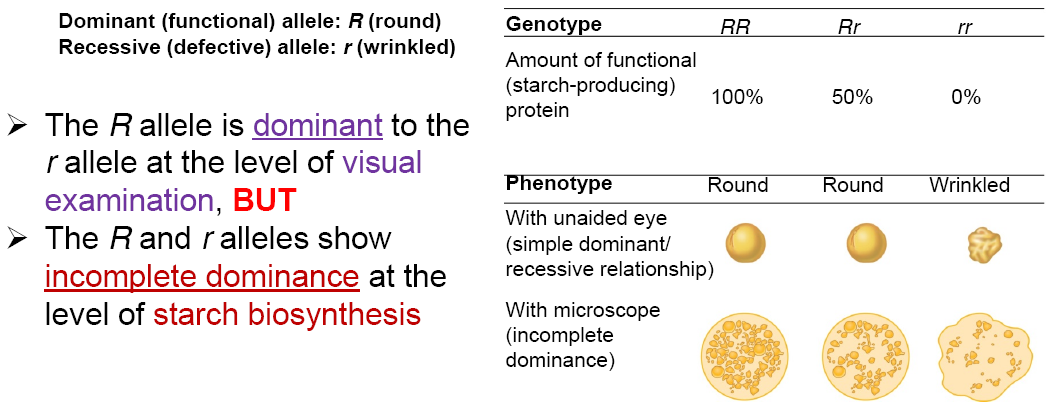
Incomplete Penetrance(外显率)
The term indicates that a dominant allele does not always “penetrate” into the phenotype of the individual
The measure of penetrance is described at the population level
- If 60% of heterozygotes carrying a dominant allele exhibit the trait, the trait is 60% penetrant
(1)Polydactyly (多趾)
Autosomal dominant trait
- Affected individuals have additional fingers and/or toes
- A single copy of the polydactyly allele is usually sufficient to cause this condition
- In some cases, however, individuals carry the dominant allele but do not exhibit the trait
(2)penetrance(外显率)
The measure of penetrance(外显率) is described at the population level
• If 60% of heterozygotes carrying a dominant allele exhibit the trait, the trait is 60% penetrant
从基因型到表现型会受到很多因素的影响,因此外显率不一定是100%
(3)Expressivity(外显度)
显性性状表现的程度(Expressivity is the degree to which a trait is expressed)
In the case of polydactyly, the number of digits can vary
- A person with several extra digits has high expressivity of this trait
- A person with a single extra digit has low expressivity
The molecular explanation of expressivity and incomplete penetrance may not always be understood
In most cases, the range of phenotypes is thought to be due to influences of the
- Environment and/or
- Other genes
(4)Variable Expressivity
Variable expressivity: A trait is not manifested uniformly among the individuals.
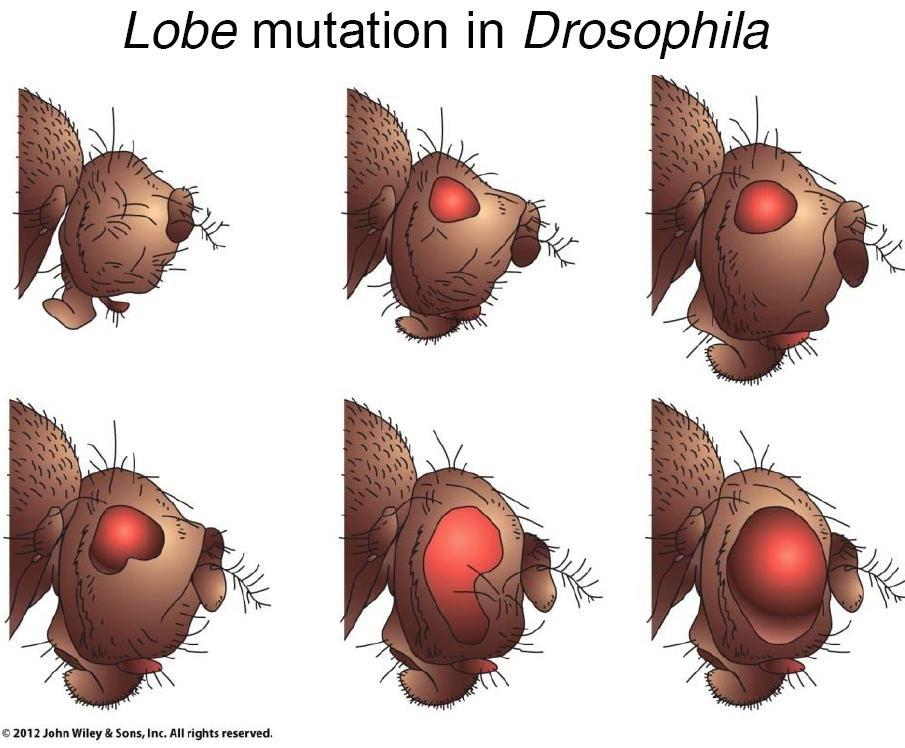
Environment 环境因素的影响
环境因素对于表现型具有重要的影响作用(Environmental conditions may have a great impact on the phenotype of the individual)
- Some animals like the arctic fox change coat color: white in winter, grayish brown in summer

- Humans affected by phenylketonuria (PKU) are unable to metabolize phenylalanine
symptoms include mental retardation
- When detected early, individuals can be fed a restricted diet essentially free of phenylalanine and remain symptom free
Geneticists often examine a range of conditions when studying the effect of environment on phenotype
This allows them to see the norm of reaction of the environmental influence on phenotypic range
The norm of reaction for eye facet number in genetically identical flies decreased at increasing temperature
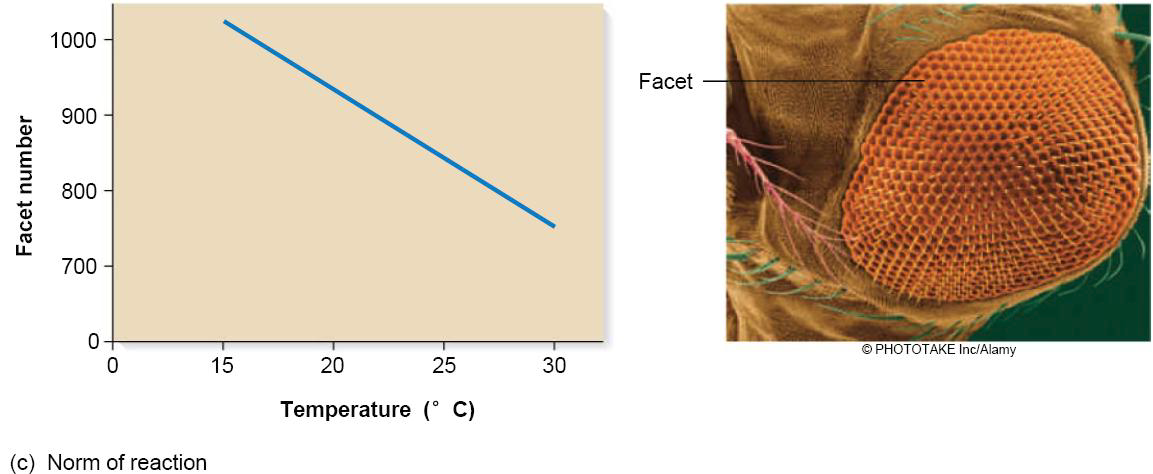
Overdominance 超显性
Overdominance, or called heterozygote advantage(杂合子优势) is the phenomenon in which a heterozygote is more vigorous than both of the corresponding homozygotes
- Larger
- Disease‐resistant
- Better able to withstand harsh environment conditions
At the molecular level, overdominance is due to two alleles that produce slightly different proteins
But how can these two protein variants produce a favorable phenotype in the heterozygote
There are three possible explanations for overdominance at the molecular/cellular level
(1)Disease resistance
Example: Sickle‐cell anemia
Heterozygous Hb^A^Hb^S^ more resistant to malaria(疟疾)
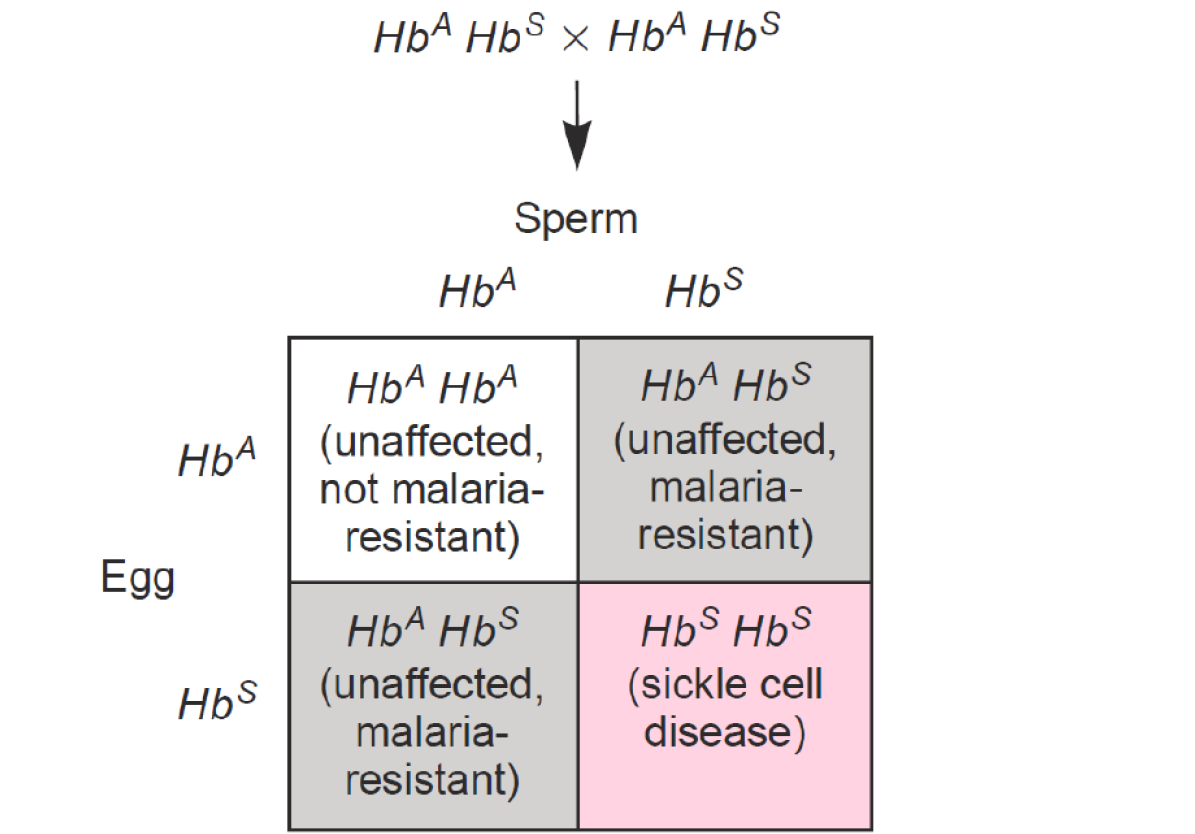
(2)Homodimer(同型二聚体) formation
Some proteins function as homodimers: It is composed of two different subunits, which is encoded by two alleles of the same gene
- A1A1 homozygotes
– Make only A1A1 homodimers - A2A2 homozygotes
– Make only A2A2 homodimers - A1A2 heterozygotes
– Make A1A1 and A2A2 homodimers and A1A2 homodimers

– For some proteins, the A1A2 homodimer may have better functional activity (– Giving the heterozygote superior characteristics)
(3)Variation in functional activity
A gene, E, encodes a metabolic enzyme
Allele E1 encodes an enzyme that functions better at lower temperatures
Allele E2 encodes an enzyme that functions better at higher temperatures
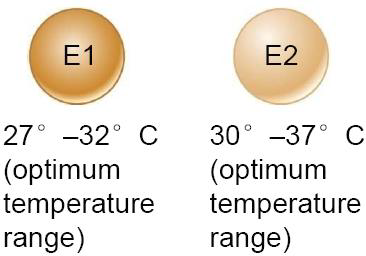
E1E2 heterozygotes produce both enzymes
they have an advantage in which they function over a wider temperature range than either E1E1 or E2E2 homozygotes
Codominance(共显性)
Neither allele is dominant.
Two alleles appear to contribute independently to the phenotype of the heterozygotes
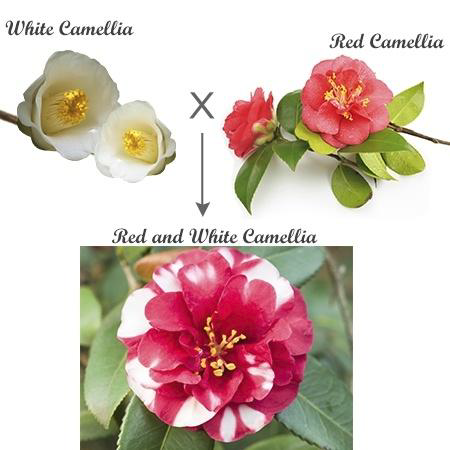
Multiple Alleles(复等位基因)
Many genes have multiple alleles
- Three or more different alleles
- Multiple alleles are found within natural populations
Example: Human ABO Blood Group
It is determined by the type of antigen present on the surface of red blood cells
Antigens are substances that are recognized by antibodies produced by the immune system
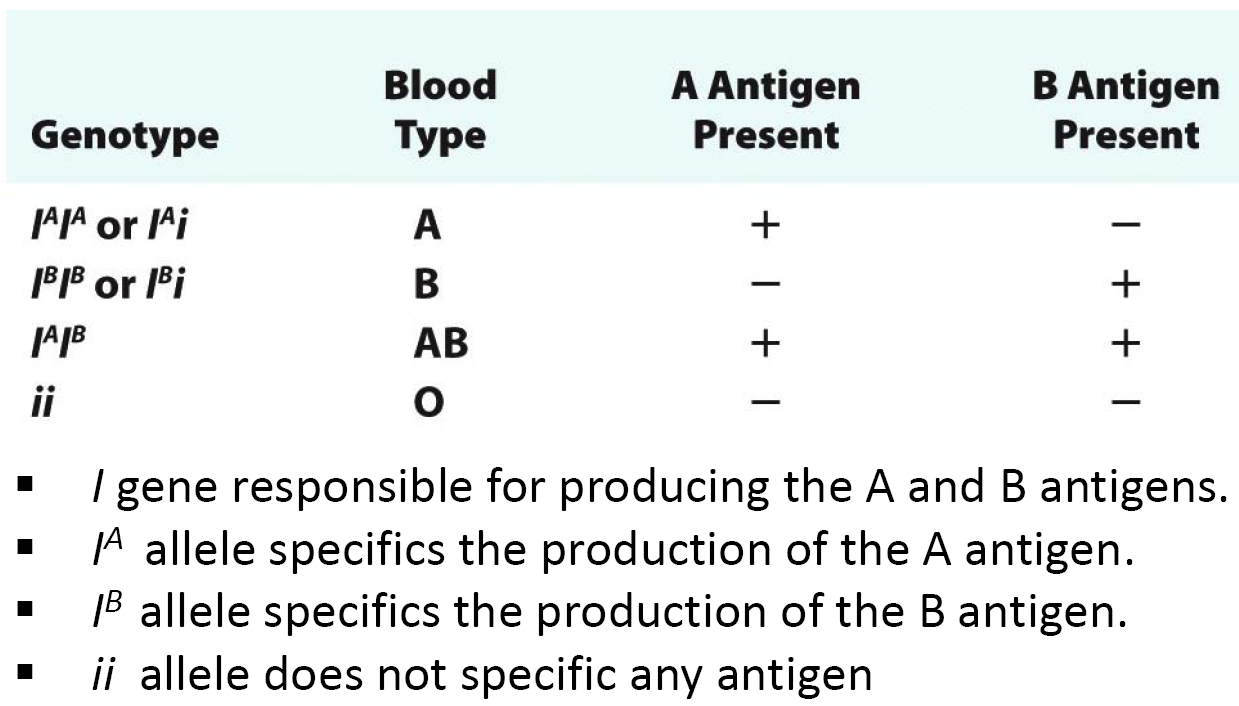
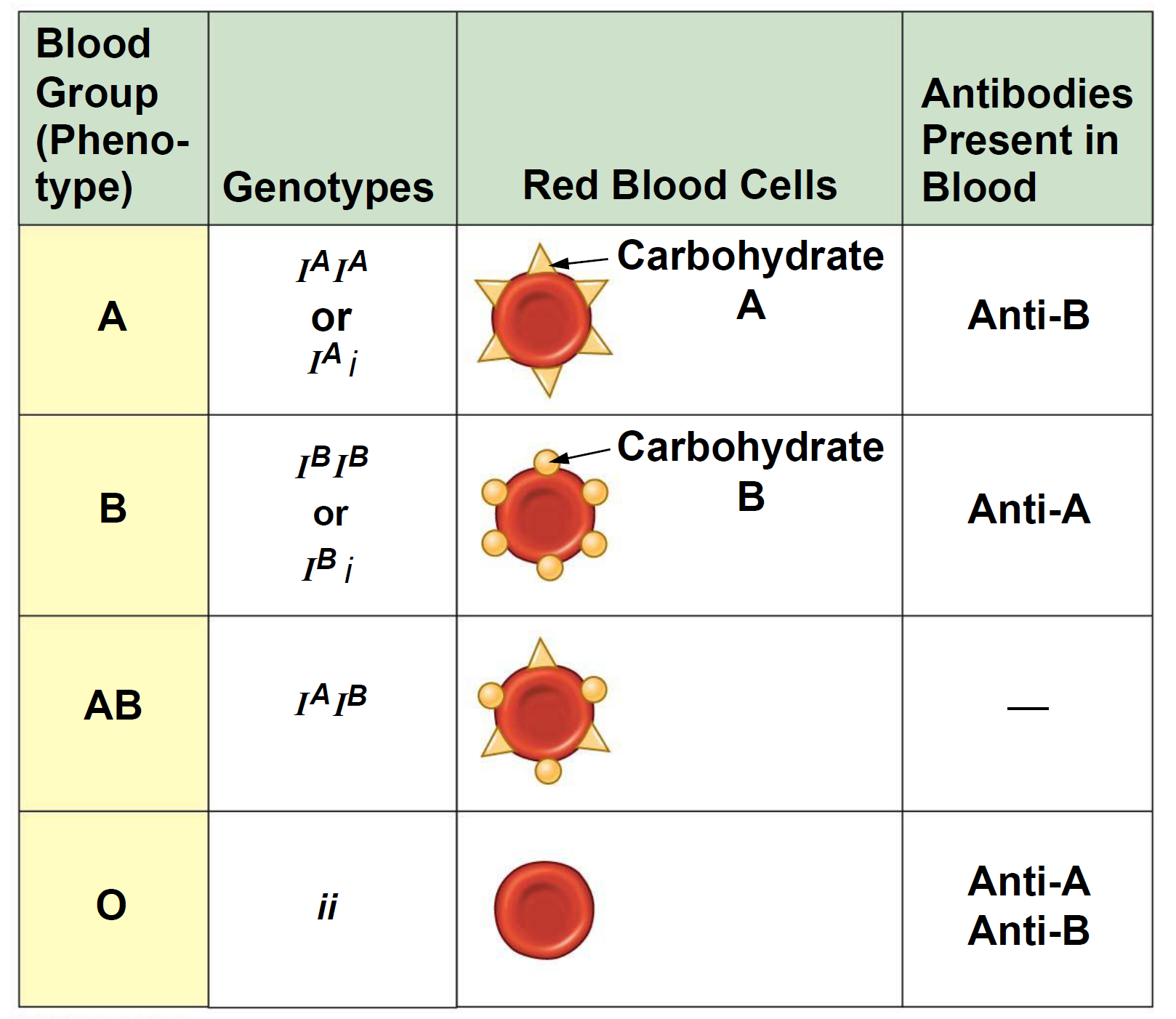
ABO血型抗原的形成
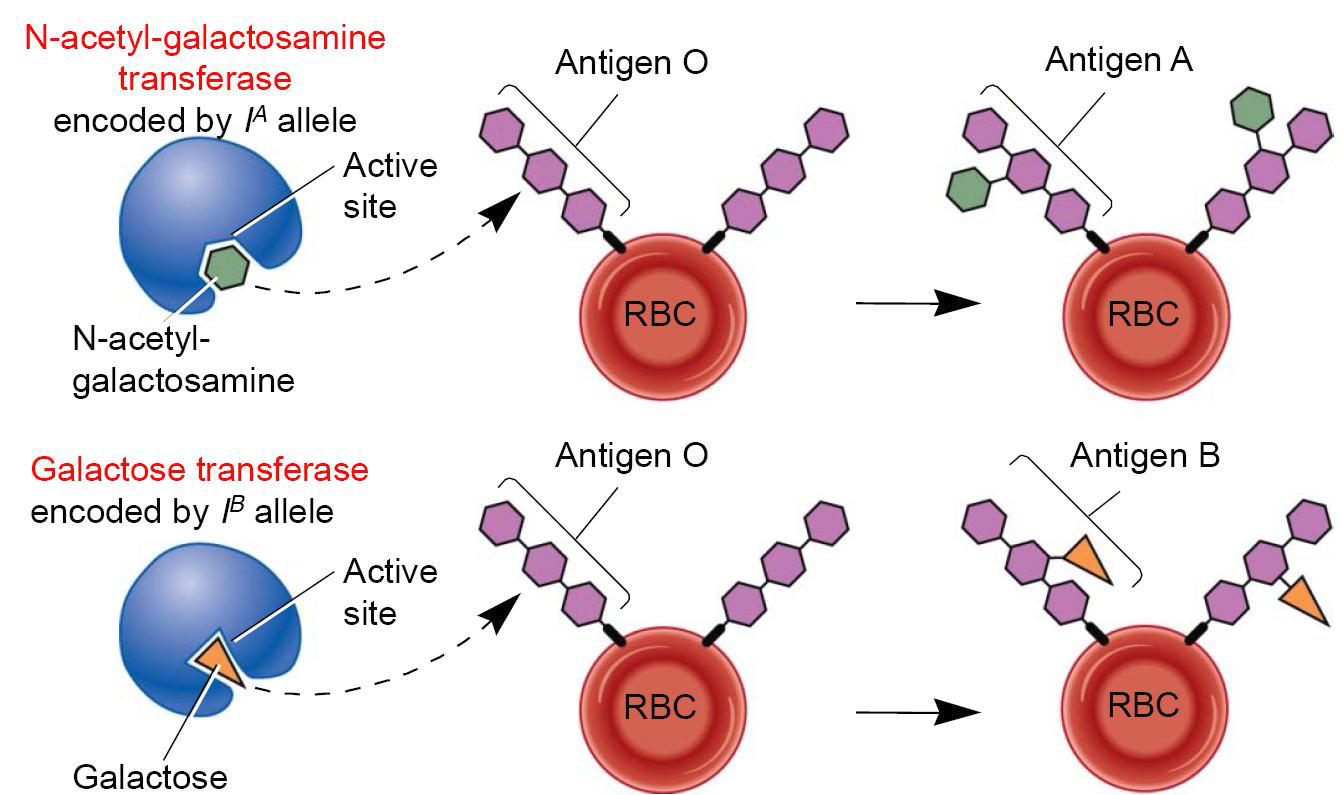
Example: Coat Colors in Rabbits
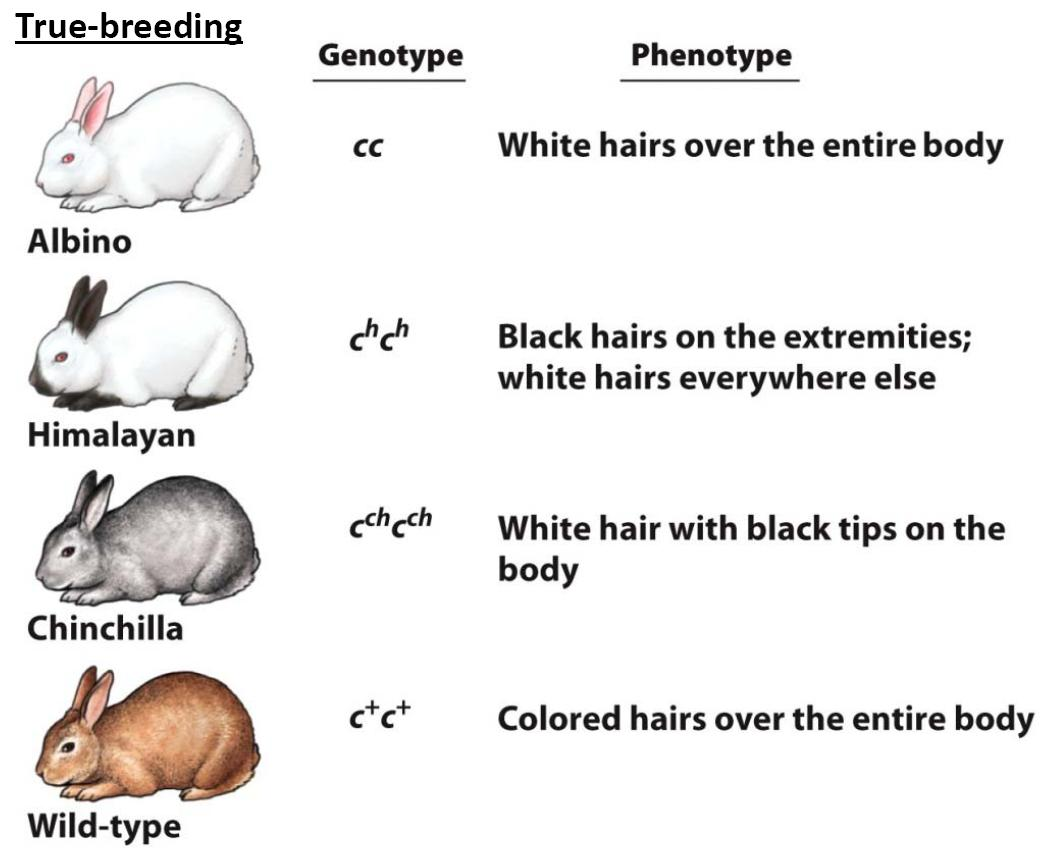
The different phenotypes are caused by four different alleles of the c gene.
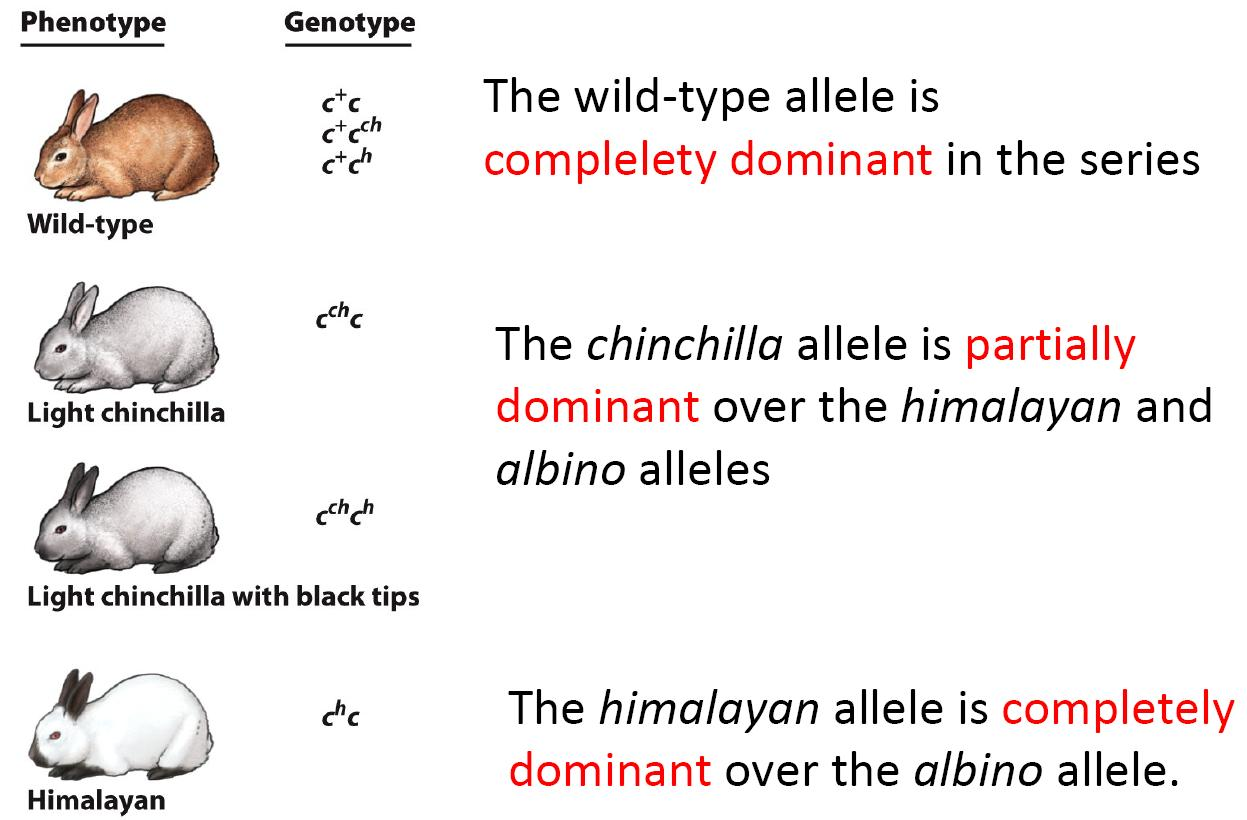
X-linked Genes
Many species have males and females that differ in their sex chromosome composition
Certain traits are governed by genes on the sex chromosomes
A pedigree (家谱;系谱) for an X‐linked disease shows that it is mostly males that are affected with their mothers as carriers
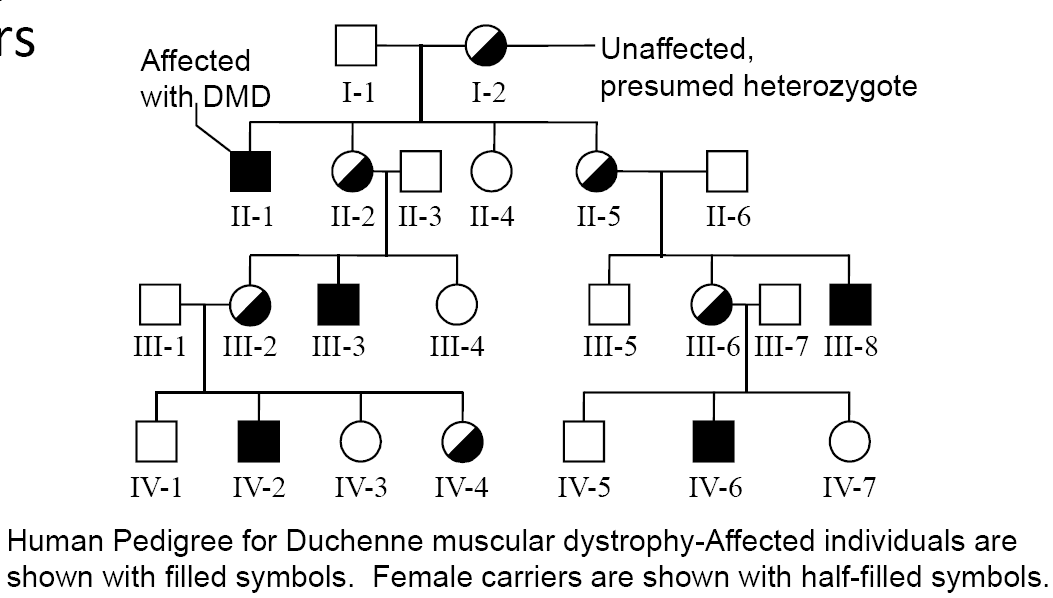
An affected male and unaffected female have no affected offspring, but females are carriers
An affected female and unaffected male have all male offspring affected and females all carriers
X-linked dominant disorders are uncommon relative to other types of mendelian diseases and show an excess of affected females in a family, since women have two X chromosomes.
X-linked dominant disorders do not show father to son transmission, and affected males (hemizygous for the mutant allele) are usually more severely affected than female heterozygotes.
Sex‐influenced Traits
Sex‐influenced does not mean sex‐linked
- Most sex‐influence traits are autosomal
- Traits where an allele is dominant in one sex but recessive in the opposite sex $\rarr$ sex influence is a phenomenon of heterozygotes
Example: Pattern baldness in humans
– Caused by an autosomal gene
- Allele B is dominant in males, but recessive in females
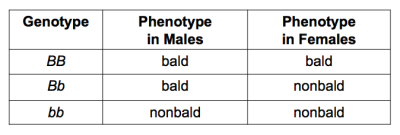
Pattern baldness appears to be related to the production of the male sex hormone testosterone (睾酮)
- Pattern baldness results from overexpression of a gene that converts testosterone to 5‐$\alpha$‐dihydrotestosterone (DHT) which binds to cellular receptors and alters expression of many genes

Sex‐limited Traits
Traits that occur in only one of the two sexes
- For example in humans
– Breast development(乳房发育) is normally limited to females
– Beard growth(胡须生长) is normally limited to males
Lethal alleles (致死等位基因)
1. Essential Gene and Nonessential Gene
Essential genes are those that are absolutely required for survival
- The absence of their protein product leads to a lethal phenotype
- It is estimated that about 1/3 of all genes are essential for survival
Nonessential genes are those not absolutely required for survival
2. Lethal Genes
A lethal allele is one that has the potential to cause the death of an organism
- These alleles are typically the result of mutations in essential genes
- They are usually inherited in a recessive manner
Many lethal alleles prevent cell division: These will kill an organism at an early age
Some lethal alleles exert their effect later in life
- Example: Huntington disease
- Characterized by progressive degeneration of the nervous system, dementia and early death
- The age of onset for the disease is usually between 30 to 50
Conditional lethal alleles
Conditional lethal alleles may kill an organism only when certain environmental conditions prevail

3. Recessive Lethal Mutation
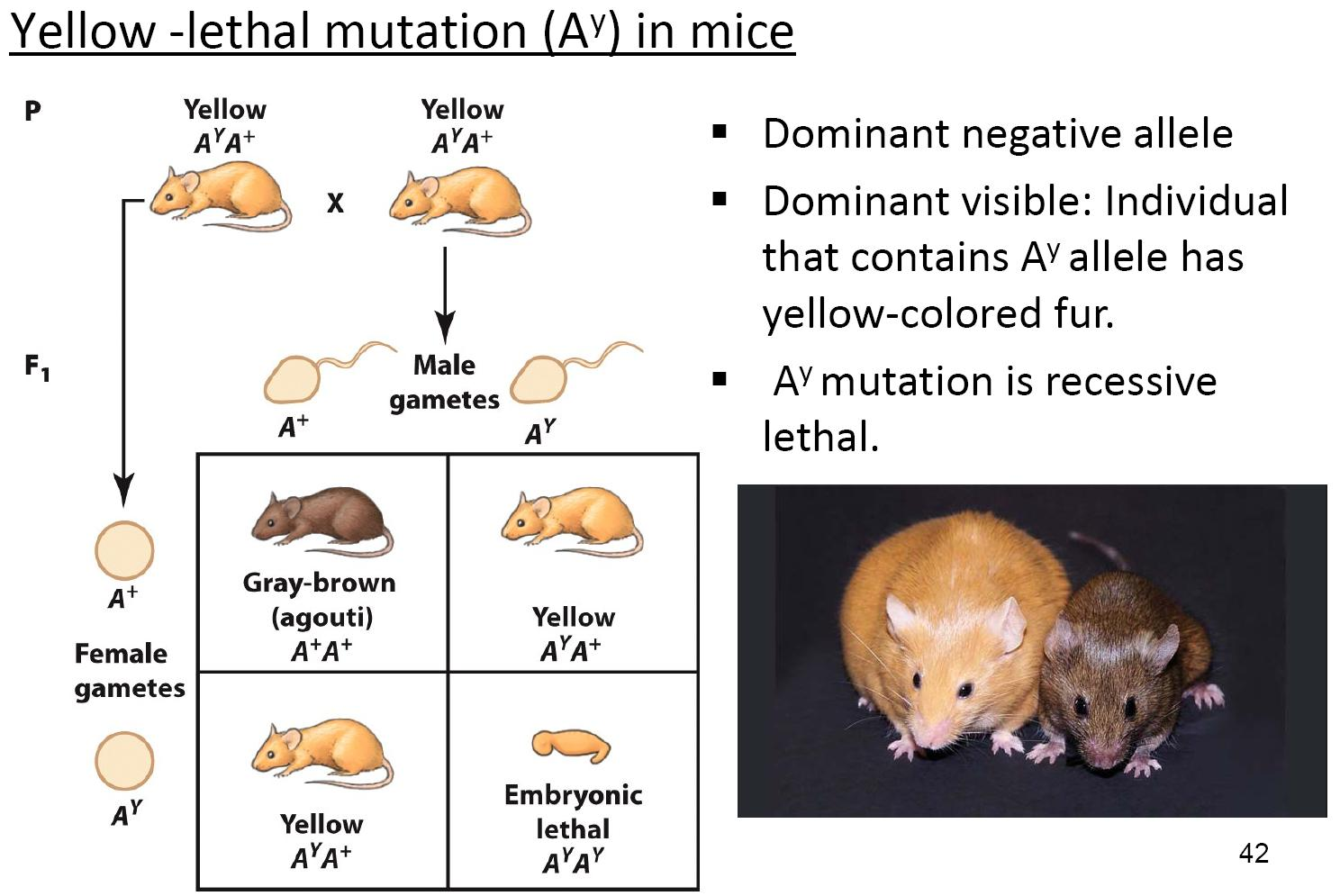
二、Inheritance patterns of multiple genes
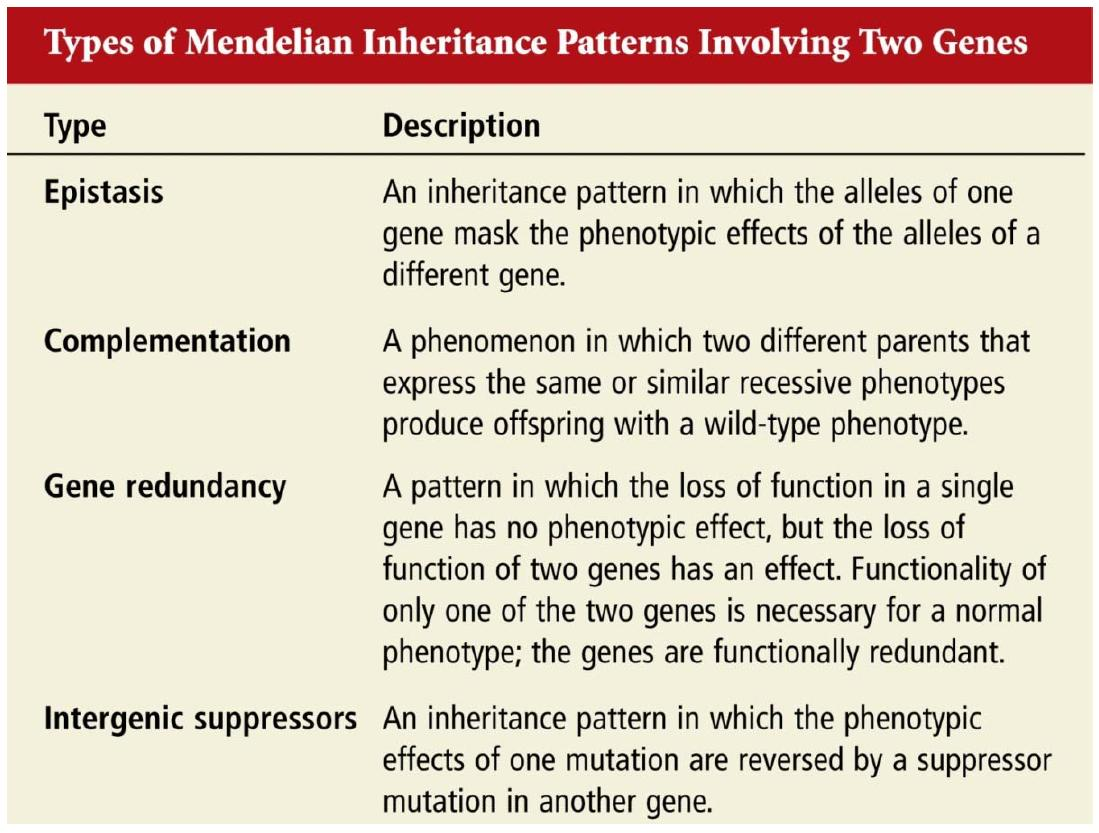
Epistasis 上位性;异位显性
An allele of one gene overrides the effect of other genes on the phenotype.
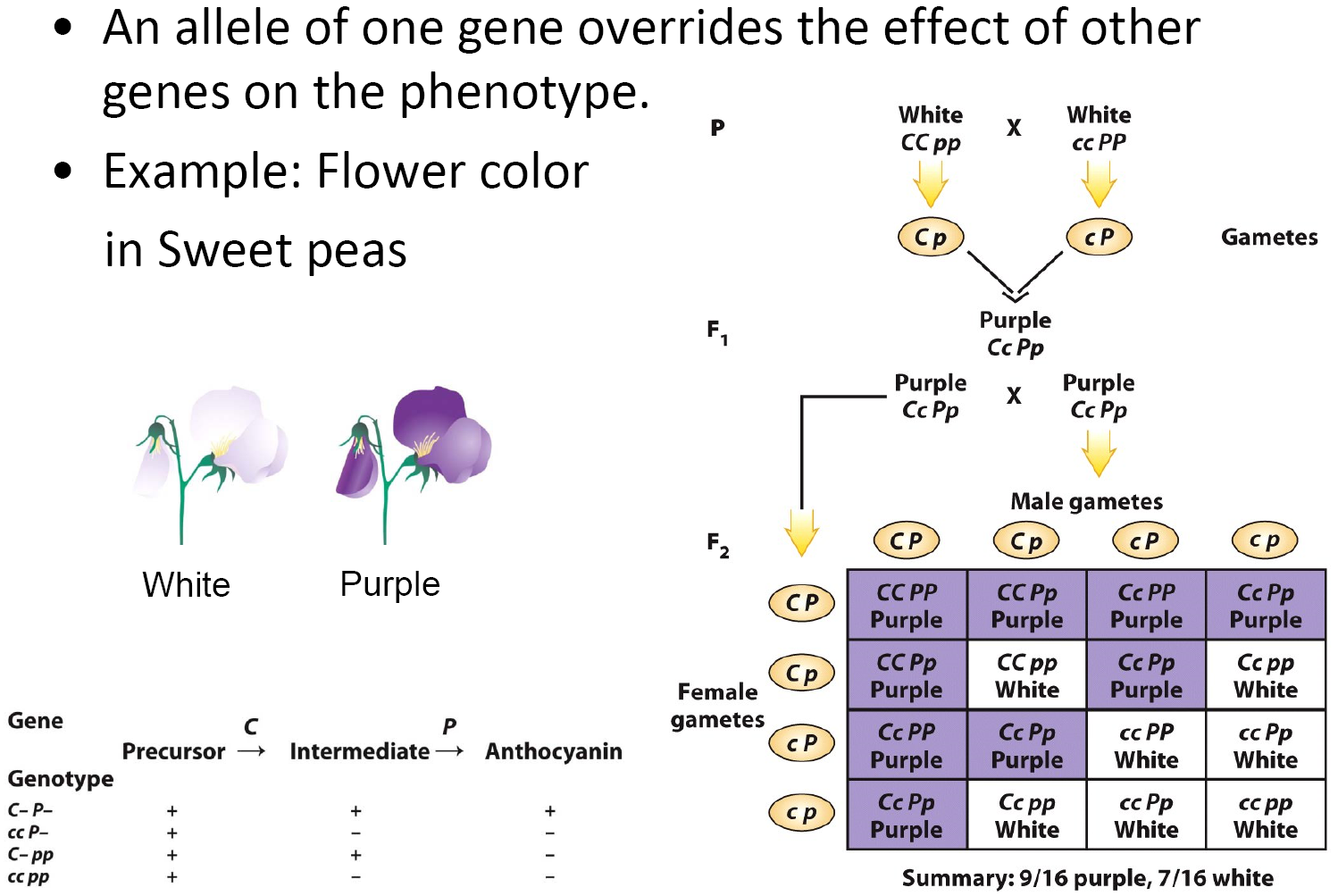
Complementation 互补
A phenomenon in which two different parents that express the same or similar recessive phenotypes produce offspring with a wild‐type phenotype
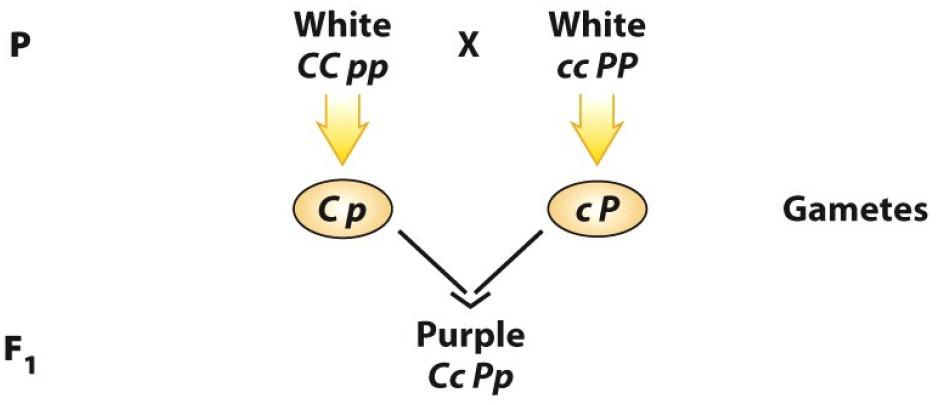
1. Complementation Test/ Cis-trans test
A phenomenon in which two different parents that express the same or similar recessive phenotypes produce offspring with a wild‐type phenotype
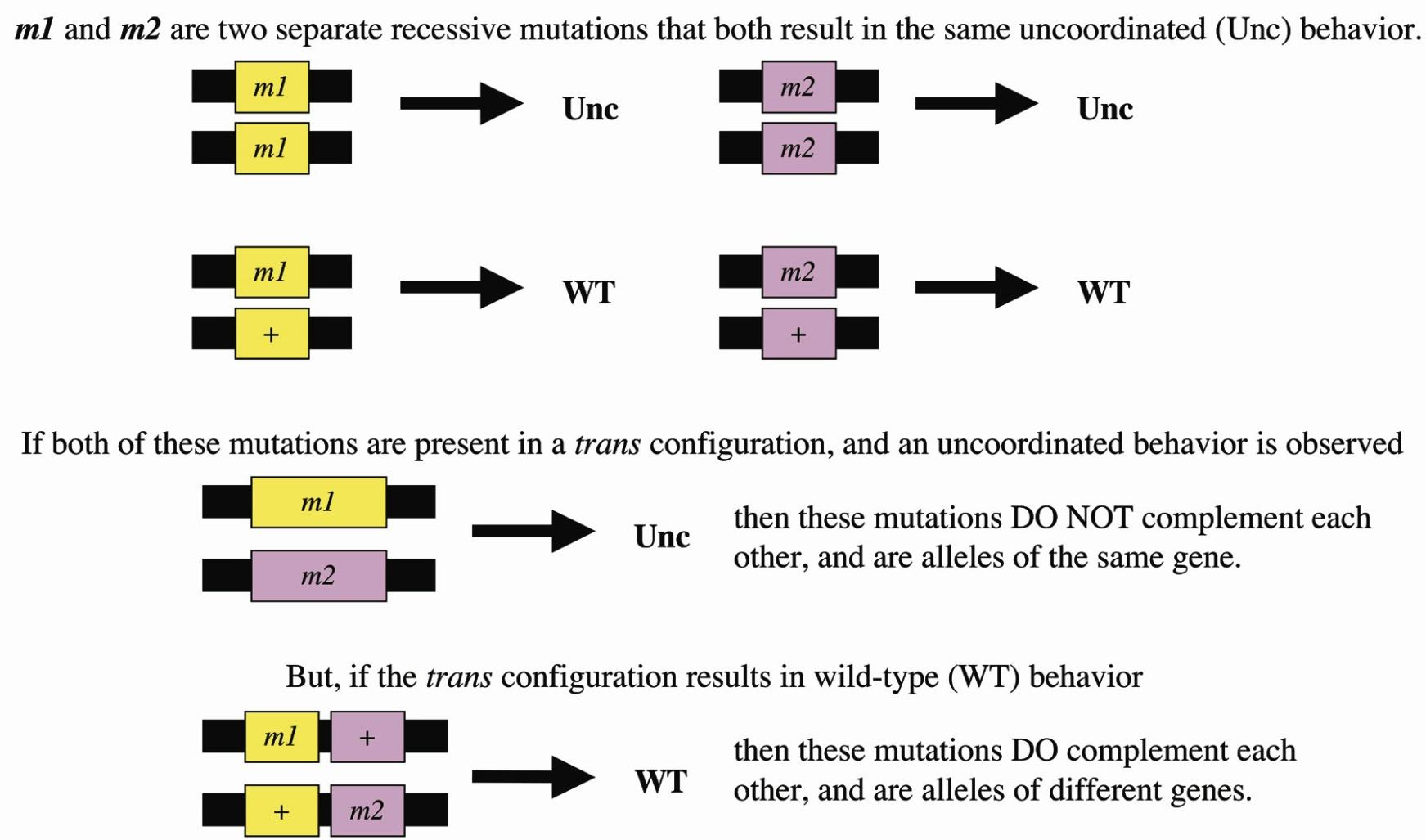
Gene Redundancy 基因丰余
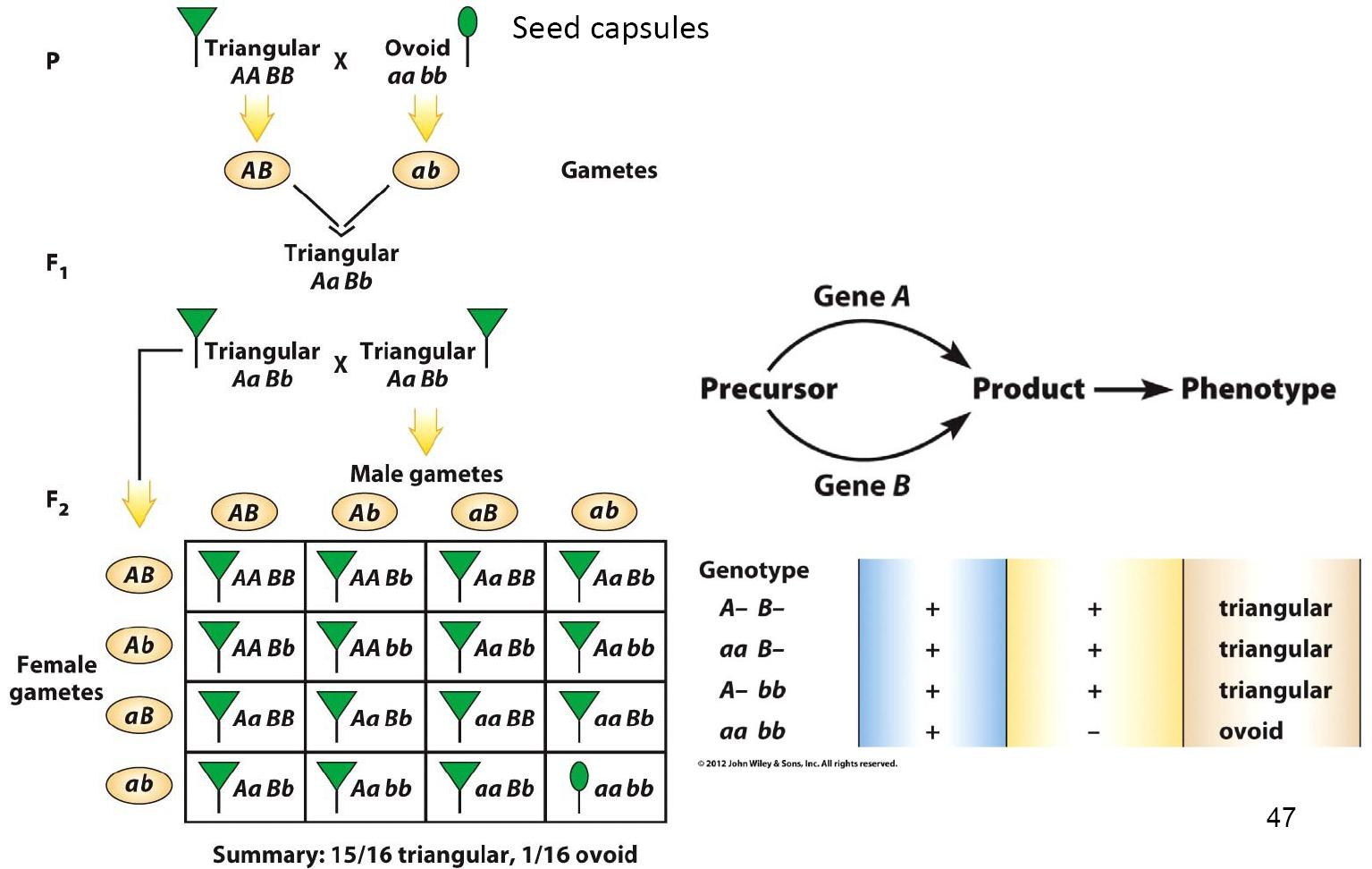
Gene redundancy is the existence of multiple genes in the genome of an organism that perform the same function. This is the case for many sets of paralogous genes. When an individual gene in such a set is disrupted by mutation or targeted knockout, there can be little effect on phenotype as a result of gene redundancy, whereas the effect is large for the knockout of a gene with only one copy.
因所编码的RNA或蛋白质用量很大,故基因的份数很多,只有在隐性基因或隐性突变达到一定数目之后,才会影响到性状
Intergenic suppressors 基因间抑制
A suppressor mutation is a mutation that nullify (使无效) the effect of an earlier mutation there by reversing it’s effect.
An intragenic suppressor is a mutation which is a suppressor mutation that occurs in the same gene where the first mutation had occurred.
In intergenic suppressor mutations, the suppressor mutation happens in a location somewhere else in the DNA, which is not in the same gene where the original mutation had happened.
